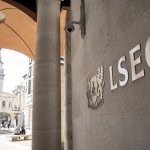In 2020, two police officers in Hackney strip-searched a 15-year-old Black girl at her school. Police conducted the search of this child, known as Child Q, without the consent of her parents, without an appropriate adult present (despite this being required by the Police and Criminal Evidence Act 1984), and with the knowledge that she was menstruating.
The subsequent safeguarding review, held in March 2022, concluded that “racism (whether deliberate or not) was likely to have been an influencing factor in the decision to undertake a strip search.”
The fallout from the case of Child Q has followed a script that is all too familiar. Anti-racist campaigners have pointed to the incident as further evidence that racism remains a problem in contemporary Britain. Teachers at the school in question have expressed shock, reportedly claiming not to have known about the search. The Metropolitan Police has put the two officers directly involved on desk duty.
Each narrative, and each response, focuses squarely on Child Q and on the violence she suffered. There is a reason why this all seems so predictable. Discussions of racism in Britain centre around the experiences and traumas of Black people, but rarely on the perpetrators.
How we talk about racism
When we talk about incidents of racism, the focus – from both individuals and institutions – is often placed on the victim’s behaviour or background.
British police have routinely justified using stop and search more often against ethnic minority groups by incorrectly claiming that crime and gang membership among these groups is higher. Research, however, shows that racial bias is at the root of this disproportionate use of stop and search: black people in Britain are nine times more likely to be affected than white people.
Similarly, discussions around the higher COVID death rates among minority groups puts disproportionate focus on the health problems (vitamin D deficiency, diabetes) in the affected population groups.
Research shows, however, that racism has been a fundamental cause. It explains why minority ethnic people were more likely to be in dangerous, frontline professions; unable to work from home; more likely to face unemployment and deprivation; and more likely to avoid contact with health professionals. Racism is multifaceted.
As writer and academic Gary Younge put it, “The virus does not discriminate on grounds of race. It didn’t need to. Society had done that already.”
How we respond to racism
When incidents of racism make the news, even activists and protesters emphasise, in response to each case, the victim’s innocence and vulnerability. In other words, the victim becomes the whole story: Black people themselves are depicted as the source of racism. American sociologist WEB Du Bois identified this impossible situation in 1897 – over a century ago – when he asked, “How does it feel to be a problem?”
Left out of the discussion, every time, is whiteness. Black victims of racism are made hypervisible, while white perpetrators are kept invisible. There is power in this invisibility. Because white people are not racialised – they are seen as the default, and any other racial group is seen as “other” – their experiences are presented as those of individuals: race is not considered a factor in what they do.
When teachers referred Child Q to the police, they denied her the right to be taught and protected from harm. Instead, they treated her as a threat to other students, thereby effectively placing her outside of the educational institution. Research has highlighted how these institutions are characterised by whiteness, in terms of cohort racial makeup and the student experience and outcomes for people of colour.
When the police officers searched Child Q, they denied her the protections that the law guarantees to children. Instead, they treated her as a criminal adult. In the process, they drew, knowingly or not, from a long history of criminalising and dehumanising Black people for the (imagined) protection of white people.
They also engaged, as the safeguarding review noted, in adultification bias, wherein adults consider Black children to be older and less innocent than white children. Police leaders in Tower Hamlets and Hackney have since acknowledged as much.
Whiteness underpins racism. Ignoring whiteness perpetuates its violence. US writer Ijeoma Oluo made this point emphatically after the 2016 US presidential election. “White people,” she wrote, “I don’t want you to understand me better; I want you to understand yourselves. Your survival has never depended on your knowledge of white culture. In fact, it has required your ignorance.” It is only by making whiteness visible that we can understand what leads to violence against Black people.
At the heart of racism is not the existence of Black people, but the active work of white institutions to maintain white supremacy. White supremacy is bigger than the sum of individual white people’s actions.
At its most basic level, whiteness is a way of categorising people, humanising some by dehumanising others. This shapes the way that people exist in society and interact with institutions. It also helps to explain what happened to Child Q. Her statement is a harrowing reminder of how the maintenance of whiteness makes it impossible for Black people to simply exist. “I can’t go a single day,” she said, “without wanting to scream, shout, cry or just give up.”
Understanding contemporary racism as the legacy of centuries-old colonialism and slavery may make it seem even more overwhelming. But recognising that whiteness is at the heart of racism can and should change our response. Opposing racism means working to overcome whiteness and reclaim humanity.
Meghan Tinsley does not work for, consult, own shares in or receive funding from any company or organization that would benefit from this article, and has disclosed no relevant affiliations beyond their academic appointment.









